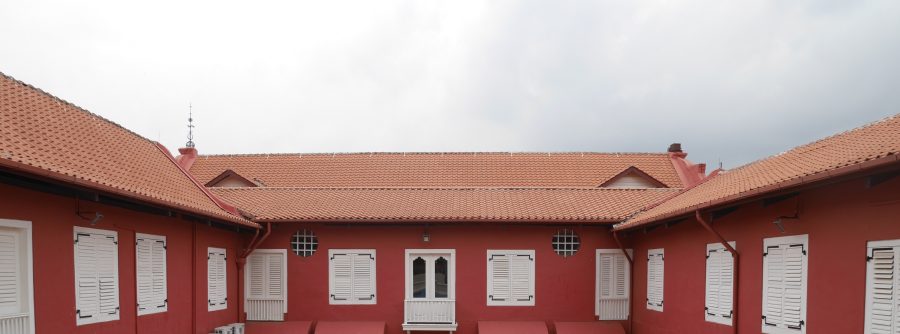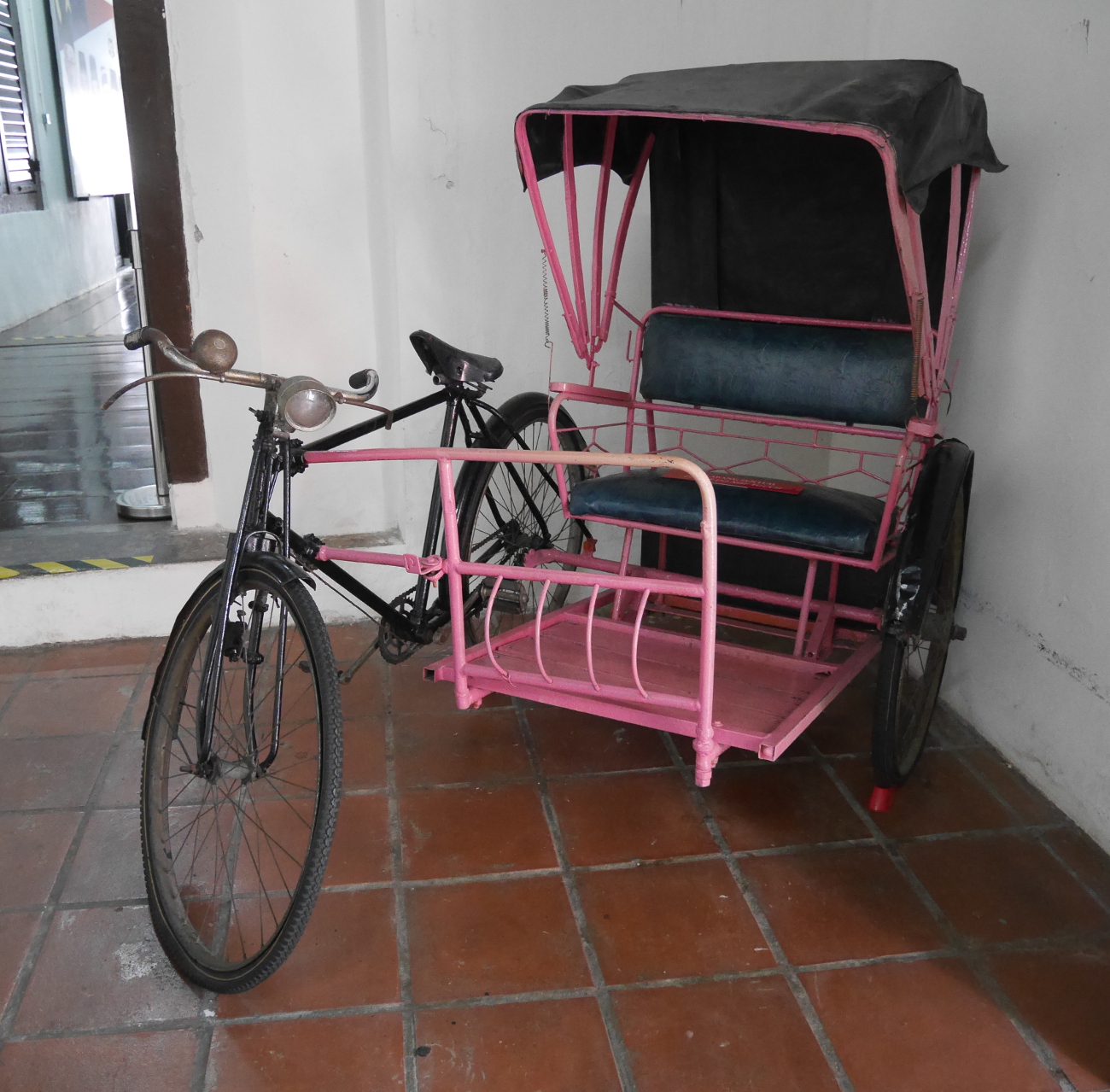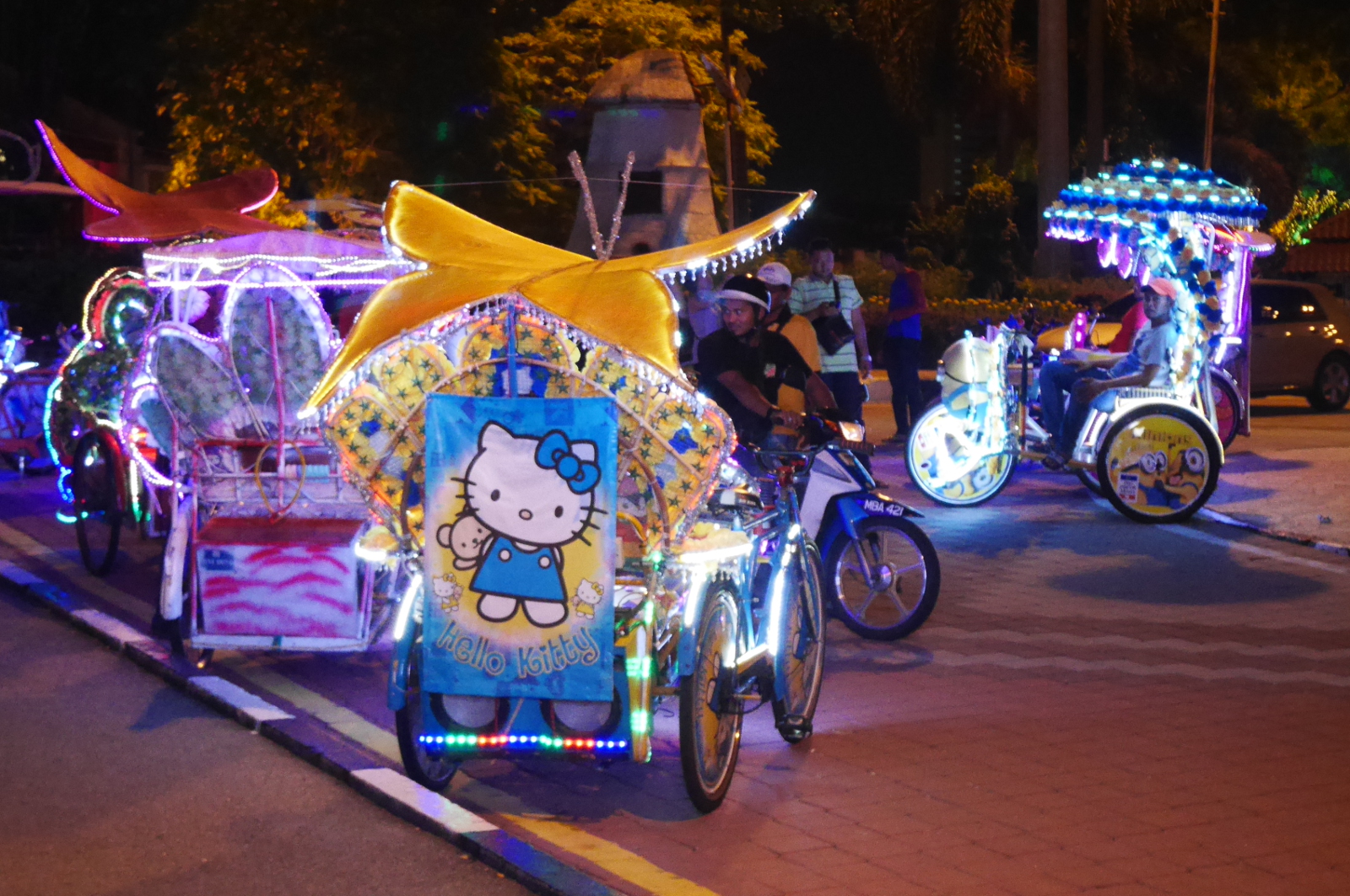On a recent trip to Singapore and Malaysia to attend the Society for the History of Technology’s first meeting in Asia, I came across a curious example of local technology, the trishaw. At first glance, trishaws looked like cycle rickshaws, common in India, but on closer inspection they turned out to be an ordinary bicycle with a sidecar clamped to one side.
The trishaws I saw were not regular taxis. Instead, like the pedicabs of New York City, they offered joy rides to tourists. In Singapore, I only saw a few forlorn trishaws parked opposite the Raffles Hotel, but in Malacca (Melaka) there were flocks of them congregating around the historic Dutch Square. The Singaporean trishaws were mostly unornamented, but the Malaccan ones were decked out elaborately. Most of the decorations featured children’s movie or TV characters, such as Doraemon, Minions, or the main characters of Frozen.
The history of trishaws in Southeast Asia began more than seventy years ago. According to C.M. Turnbull’s History of Singapore (Oxford, 1977), trishaws originated in World War II during the Japanese occupation of Syonan (“Light of the South,” the name given to Singapore by the Japanese). Singapore, an island state with few natural resources, had long been economically oriented toward the west. The Japanese occupation cut off Singapore’s western trade links, leading to severe resource shortages. Some enterprising Singaporeans found ways to create domestic import substitutes, such as banana-fiber ropes and bamboo paper. Trishaws were another such improvisation. Not only could they be readily adapted from existing bicycles, they also did not consume any gasoline, another scarce wartime commodity. After the end of the war, Singapore’s economy recovered, but trishaws continued to be used into the 1970s. More recently, they have made a comeback for tourists.







Andrew S
The versatility is impressive. One could ride their bike solo for speed, then clamp on the side car and go to work ferrying passengers. It’s practical in so many ways.